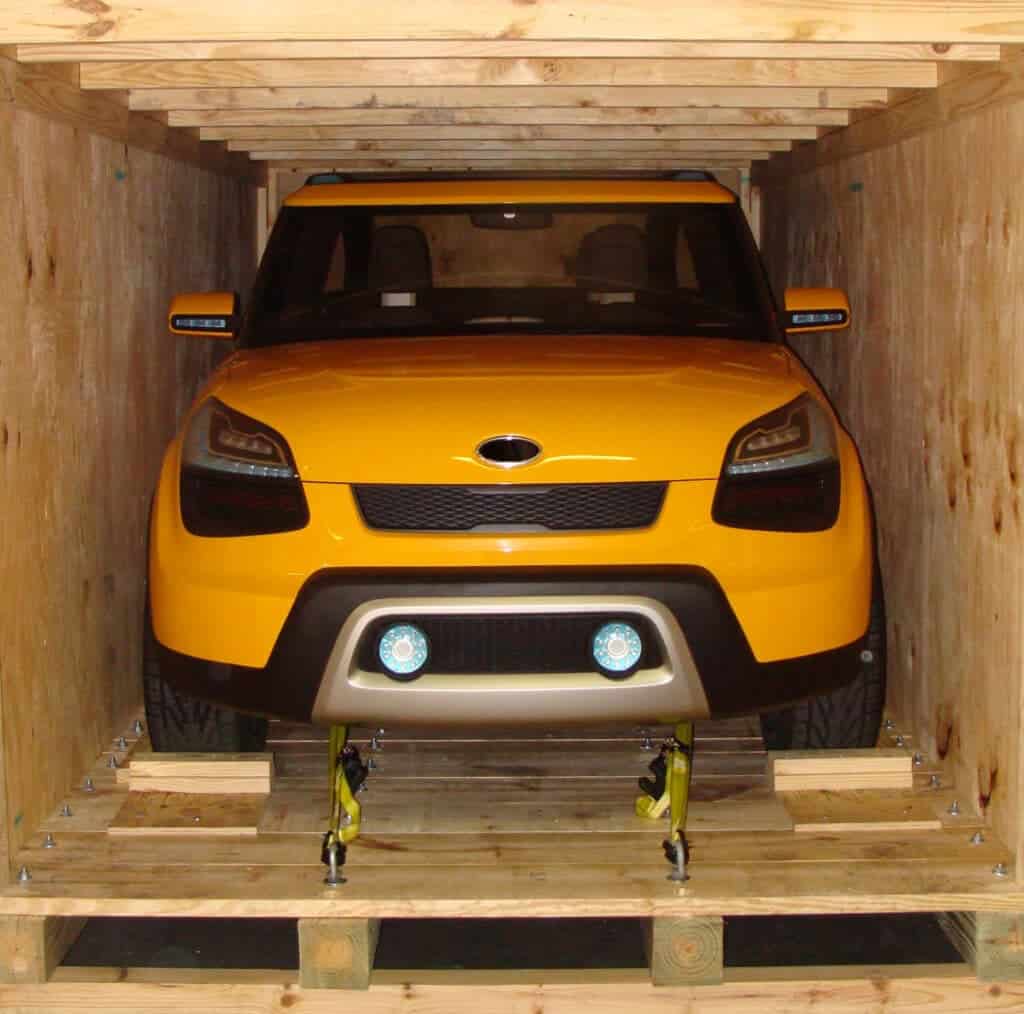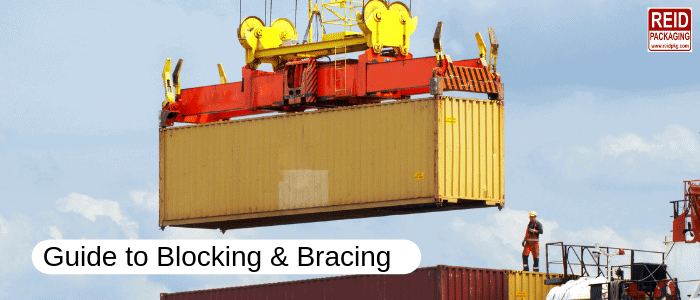Blocking & Bracing – Economical & Secure
Matching the packaging approach with the product being shipped and its transportation journey is one of the most important and also the most difficult things about winning in packaging.
Many companies see a piece of machinery or other product and immediately think: we’ll have to put this in a crate in order to ship it.
Well, there are times when crating is unnecessary. In those times, blocking and bracing may be all that is needed. But getting blocking and bracing right is a whole other issue. Many people think blocking and bracing is something that can be done without much thought or preparation. In fact, though it can be simpler than crating, blocking and bracing requires rigorous planning and expertise in order to make sure that things remain safe and secure.
Intro to Blocking & Bracing
Blocking & bracing is a method of securing a load. The more the load weighs the more important blocking and bracing becomes, because the more there is that can go wrong.
Blocking means preventing the load from moving laterally (side-to-side, front-and-back) and bracing means preventing the load from moving vertically (up-and-down). Without proper bracing, a load can jump over its blocks. And without proper blocking, the braces will not hold.
Objects in motion tend to stay in motion.
If you’re looking at a very heavy object resting in a sea container you might assume that this object is so heavy that it won’t go anywhere, and for this reason it doesn’t need excessive blocking and bracing.
That would be catastrophically wrong.
Once the shipping container is moving, then the object’s momentum is proportional to its weight. A heavy object will want to stay moving and will need proportionally more blocking and bracing to prevent it from doing so. In the case of intermodal transport, objects are exposed to all kinds of movement on seas, highways and railroads: rolling side to side, pitching front to back, surging forward, heaving up and down, sudden impacts, yawning (irregular motion), and vibration. A properly blocked and braced object needs to be able to function in all of these movement types.
A common mistake that people make is to block and brace the object but neglect to properly attach the blocks to the sea container. Any force that is exerted on the object will be exerted twofold on the block. Therefore the block must be secured to absorb this extra force.
Did you know that 25% of all cargo damage in shipment comes from the cargo being improperly secured?
Sometimes those effects are catastrophic, resulting in damage to the cargo, the equipment, or even the carrier. In certain instances, they result in loss of life.

How Blocking and Bracing Can Save You Money
When transporting goods in a sea container, more rugged cargo often doesn’t need a full crate, but instead can be blocked and braced in the sea container. Using blocks and braces rather than a full crate reduces the amount of wood used and therefore lowers the cost and weight. It also results in the object being more secure. The blocked and braced object can be wrapped in vapor bags and desiccants in order to protect it from damage due to humidity or container rain. There are also desiccants packaged specifically for installation in sea containers without barrier bags.
Blocking and Bracing for Export
Blocking and bracing is especially useful in export shipping, as it lowers the amount of lumber used, enabling the shipment to pass export controls more easily. For shipments going on certain intermodal journeys, blocking and bracing rather than crating can be a huge boon to the bottom line, and can result in the shipment being expedited through customs controls. Export sea containers are often a perfect place to block and brace cargo, avoiding the added cost and complication of a crate. Still, you need to make sure that you are working with an experienced export packager who can properly protect your cargo and ensure that all the wood used passes ISPM-15 rules.
We can help you decide if you should crate your precious product or block and brace it. If blocking and bracing are suitable for the shipment, we create a solution that holds and protects the object, keeping it safe from damage no matter its journey.
Get in touch with us to see if blocking and bracing your cargo is the right thing for the job.

